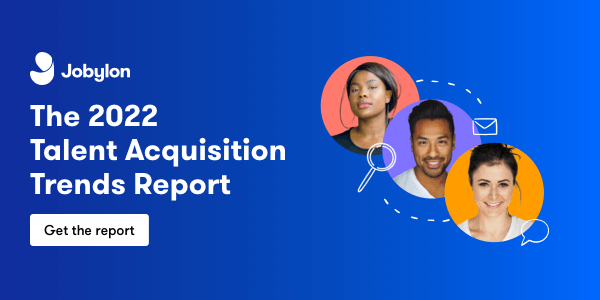
2020 has proven to be a year to remember. The COVID-19 pandemic has disrupted our personal and professional lives, leading to major changes in how we live and work. On another note, the death of George Floyd has sparked a movement against inequality and inequity. In our last Recruitment Trends 2020 white paper, we focused on how recruitment marketing, recruitment technology, and the focus on soft skills are changing the talent acquisition landscape in BAU. While all these elements are still relevant and we expect them to play a major role in reshaping our industry, this year we present you with a special report focusing on new recruitment trends that emerged as a result of the 2020 crises. We will focus on the 3 areas below:

Firstly, we will start by looking at COVID’s impact on different industries and what this means from a recruitment perspective. Also, we will look into how employers can respond to these changes to meet their recruitment needs. Then, we will discuss the shift to remote work as a result of the coronavirus pandemic. We will examine what this means for employers, recruiters, recruitment, and candidates. Lastly, we will address the need to focus on Diversity, Equity, and Inclusion (DEI). Specifically, we will explain why this is a requirement and how businesses can increase their DEI focus.
Let’s get started!
The changing demand for talent and relevant solutions
COVID-19 has brought major disruptions to markets globally, slowing down several industries and causing business issues for organizations. According to the Recruitment and Employment Confederation (REC), this has had a significant impact on the demand for talent, as employers’ confidence in making hiring decisions fell by 21% after the outbreak. This is in line with statistics demonstrating a 15% reduction in job posting during COVID times, while the jobs most impacted are permanent opportunities—which are considered a bigger investment by employers.
However, while industries such as hospitality, aviation, and retail have suffered, other sectors have had the opportunity to grow. Data from LinkedIn and REC demonstrate a hiring increase in healthcare, technology, and logistics. Thus, while the pandemic has caused issues for most businesses, it has also presented opportunities for others. In any case, the general consensus is that we have now entered an employer-driven market. While the last few years candidates had the power to drive the recruitment market, the global decrease in vacancies has turned the market upside down. In simple terms, the decrease in the supply of jobs means higher competition per role, which enables employers to be more selective, whereas applicants may not have this luxury. According to Bullhorn, this is also obvious in the staffing industry with recruitment agencies focusing on client relationships, leaving candidate relationships as a second priority.
On another note, employers who cannot afford to hire but are in need of talent have started using internal recruitment in an attempt to fill their vacancies in a cost-effective manner. According to research conducted by the HR Grapevine, internal mobility is seen as a major upcoming trend, as upskilling and promoting existing employees can boost retention, on top of being an efficient recruitment solution. However, all businesses will need to keep looking externally for specialized talent that is not a part of their existing workforce. The ongoing crisis has impacted the way employers recruit externally too. According to research by Gartner, a research and advisory firm, 32% of organizations are replacing full-time employees with contingent workers, such as freelancers and temporary workers. Another solution that employers are exploring is talent sharing, where talent is outsourced either internally to a different department, or externally to a third-party company to fill staffing gaps as required.

Remote recruitment and working
COVID has changed the way we live, with many governments around the world requesting that people stay at and work from home. In most cases, remote work is needed to effectively manage the pandemic, but this new normal has also created new desires and expectations for both candidates and recruiters. Most global employers including Microsoft, Chevron, and Hitachi have complied with this practice by allowing, or even requesting that their employees work remotely. In-house and agency recruitment teams have to operate remotely as well in most cases. This means that all communication and collaboration between recruiters, hiring managers, and other stakeholders take place virtually.
While virtual work is not a new concept for talent acquisition practitioners, executing the end-to-end recruitment process online certainly presents some new challenges. Specifically, 84 percent of talent acquisition professionals are actively working to adapt their processes to remote work, according to Jobvite. Moving to a different element of online recruitment, all the recruiter-candidate interactions take place remotely as well. This amplifies the importance of all processes and systems related to online candidate attraction, assessment, and onboarding. Here is an analysis of the major impacts on each phase at a high level:
When it comes to candidate attraction, social recruitment through LinkedIn and other tools becomes even more relevant and important due to the lack of face-to-face recruitment events. To assess candidates, Facebook and Amazon are just some of the prominent companies that are known to conduct all their interviews using videoconference, with many more companies following suit. In fact, a good number of hiring managers expect video interviews to continue even after the pandemic. Lastly, solid, well-thought-out, and thorough online onboarding is paramount, as online recruitment and work are proven to entail a risk for a decrease in employee motivation if not managed appropriately. Specifically, an efficient and appropriate onboarding process can improve retention rates by 82%, according to Glassdoor.
Lastly, remote and flexible work is here to stay. Research from Gartner demonstrates that 48% of employees plan to work remotely at least part-time after COVID, which is a sharp increase of 18 percentage points from before the pandemic. According to the same research, employers have listened to this desire, and a staggering 74% plan to make remote/flexible work available permanently for part of their workforce. Remote work has impacted recruitment at different levels, and savvy organizations have started taking relevant action to be able to attract, manage, and select top candidates efficiently.
Diversity, Equity, and Inclusion
Building a diverse workforce means hiring professionals from different backgrounds in terms of race, ethnicity, culture, religion, age, gender, and sexual orientation, amongst other factors. To be able to do this, employers need to be fair and inclusive so that they can attract and retain diverse talent. Apart from being based on a compelling ethics case, Diversity, Equity, and Inclusion (DEI) is also proven to be linked to higher profits, according to CEOs interviewed by PwC. Further, other benefits correlated with DEI include enhanced creativity, faster problem-solving, and strong employee engagement.
While the business world has made considerable progress in DEI lately, there is still scope for improvement. According to Glassdoor research from 2019, while 77% of employees in the US stated that their employer has a diverse workforce in some way, shape, or form, 55% think that their employer should take further DEI action. The recruitment function can be integral in this effort, as recruiters are the gatekeepers for all newcomers. The key to DEI-optimized recruitment is minimizing bias. Employers can take action at different levels to move towards this direction, from being open to applicants from all educational and professional backgrounds to offering recruiters and hiring managers anti-bias training, to utilizing AI during the assessment process for objectivity.
Another area of diversity for employers to consider is neurodiversity. Neurodiversity focuses specifically on identifying and hiring employers who have a diverse thought process, and it is proven to be a reliable way to hire out-of-the-box thinkers. In any case, DEI efforts should be supported and driven by senior management, so that they can be deeply ingrained in the business’s culture throughout the employee lifecycle. Most S&P 500 companies already have a Chief D&I Officer, who acts as an executive to champion the DEI agenda. Regardless of whether your organization belongs to this category, it is imperative to ensure that senior stakeholders support relevant initiatives.

